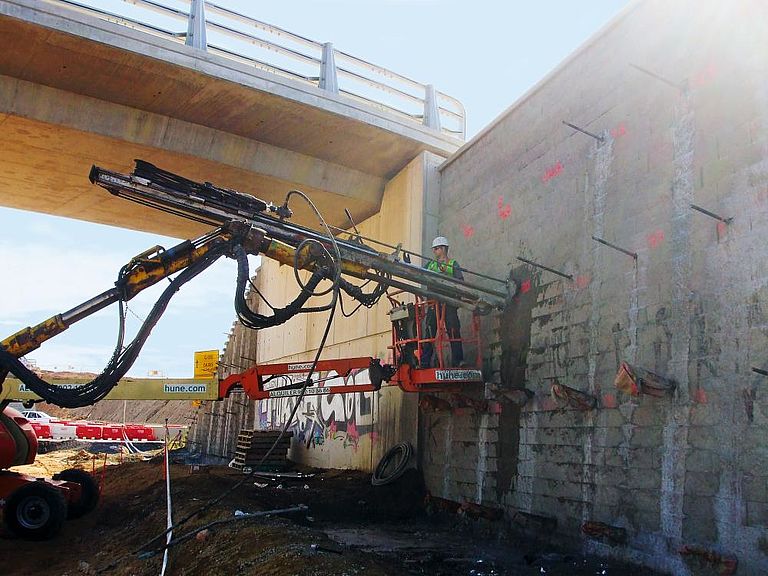In the realm of construction and geotechnical engineering, self-drilling hollow bar anchor systems have emerged as a versatile and effective solution for stabilizing slopes, retaining walls, and foundations. These innovative systems combine drilling and grouting into a single operation, allowing for faster and more efficient installation. The hollow bars, equipped with sacrificial drill bits, are capable of penetrating various soil and rock conditions, providing immediate structural support. In this blog post, we’ll explore the mechanics of self-drilling hollow bar anchor systems, highlighting their unique design, installation process, and the numerous benefits they offer for a wide range of applications, ensuring safer and more robust construction projects.
Understanding Self-Drilling Hollow Bar Anchors
Self-drilling hollow bar anchor systems are designed to overcome the challenges associated with traditional anchoring methods. The core component is a hollow steel bar, which serves as both the drill rod and the grouted anchor. These bars are available in various diameters and lengths to suit different project requirements. The hollow design allows for the simultaneous injection of grout during drilling, ensuring that the anchor is securely bonded to the surrounding ground.
Components of the System
- Hollow Bar: The central element of the system, the hollow bar, is typically made of high-strength steel. Its design allows grout to be injected through the bar during drilling, filling any voids and creating a strong bond with the surrounding material.
- Drill Bit: Attached to the end of the hollow bar is a sacrificial drill bit. This bit is responsible for penetrating the ground and is designed to be left in place once drilling is complete. Various bit designs are available to handle different ground conditions, from soft soils to hard rock.
- Couplers: For applications requiring longer anchors, couplers are used to connect multiple sections of hollow bar. These couplers ensure a continuous, robust connection between sections, maintaining the integrity of the anchor system.
- Grout: The grout used in self-drilling hollow bar systems is typically a cementitious material that fills the hollow bar and any surrounding voids, creating a solid bond between the anchor and the ground. The grout serves to transfer the load from the structure to the anchor system effectively.
Installation Process
The installation of self-drilling hollow bar anchor systems is a straightforward yet highly efficient process. Here are the key steps involved:
- Drilling: The hollow bar, fitted with a drill bit, is rotated and pushed into the ground using a drilling rig. As the bar advances, grout is simultaneously injected through the hollow core. This process ensures that the drilled hole is immediately filled with grout, stabilizing the surrounding ground and reducing the risk of collapse.
- Grouting: The continuous injection of grout during drilling ensures a complete and uniform filling of the hole. This method eliminates the need for separate grouting operations and reduces the overall installation time. The grout also helps to reduce friction and wear on the drill bit, improving drilling efficiency.
- Cutting and Finishing: Once the required depth is reached, the hollow bar is cut to the desired length, and any excess grout is removed. The exposed end of the bar can be fitted with a plate and nut to provide additional anchorage, if necessary.
Benefits of Self-Drilling Hollow Bar Anchor Systems
Self-drilling hollow bar anchor systems offer numerous advantages over traditional anchoring methods, making them a preferred choice for many construction and geotechnical projects:
- Efficiency: Combining drilling and grouting into a single operation significantly reduces installation time and labor costs. This efficiency is particularly beneficial in large-scale projects where time and budget constraints are critical.
- Versatility: These systems can be used in a wide range of ground conditions, including loose soils, gravels, and fractured rock. The variety of drill bits and hollow bar sizes available allows for customization to meet specific project needs.
- Immediate Load-Bearing Capacity: The continuous injection of grout during drilling ensures that the anchor is immediately bonded to the ground, providing instant structural support. This characteristic is essential for projects requiring quick stabilization, such as emergency slope repairs.
- Reduced Ground Disturbance: The self-drilling process minimizes ground disturbance compared to traditional methods that require pre-drilling and separate grouting. This advantage is particularly important in environmentally sensitive areas or urban settings where minimizing disruption is crucial.
- Reliability: The robust design of self-drilling hollow bar anchor systems, combined with the strength of the grout bond, ensures long-term stability and reliability. These systems have been proven in various challenging conditions, providing peace of mind to engineers and contractors.
Applications
Self-drilling hollow bar anchor systems are used in a variety of applications, including:
- Slope Stabilization: Preventing landslides and erosion by anchoring unstable slopes.
- Retaining Walls: Providing support to retaining structures in excavation and construction projects.
- Foundations: Reinforcing foundations in areas with poor soil conditions or where additional load-bearing capacity is required.
- Tunneling: Supporting tunnel walls and roofs to prevent collapse during excavation.
Conclusion
Self-drilling hollow bar anchor systems represent a significant advancement in ground reinforcement technology. Their efficiency, versatility, and reliability make them an indispensable tool in modern construction and geotechnical engineering. By understanding how these systems work and the benefits they offer, engineers and contractors can make informed decisions that enhance the safety and success of their projects.
How do self-drilling hollow bar anchor systems work?
The article explains how self-drilling hollow bar anchor systems combine drilling and grouting into a single operation, offering efficient and versatile ground stabilization for slopes, retaining walls, foundations, and tunnels. These systems provide immediate structural support, reduce installation time and costs, and are effective in various soil and rock conditions, making them a reliable choice for modern construction and geotechnical engineering projects.
